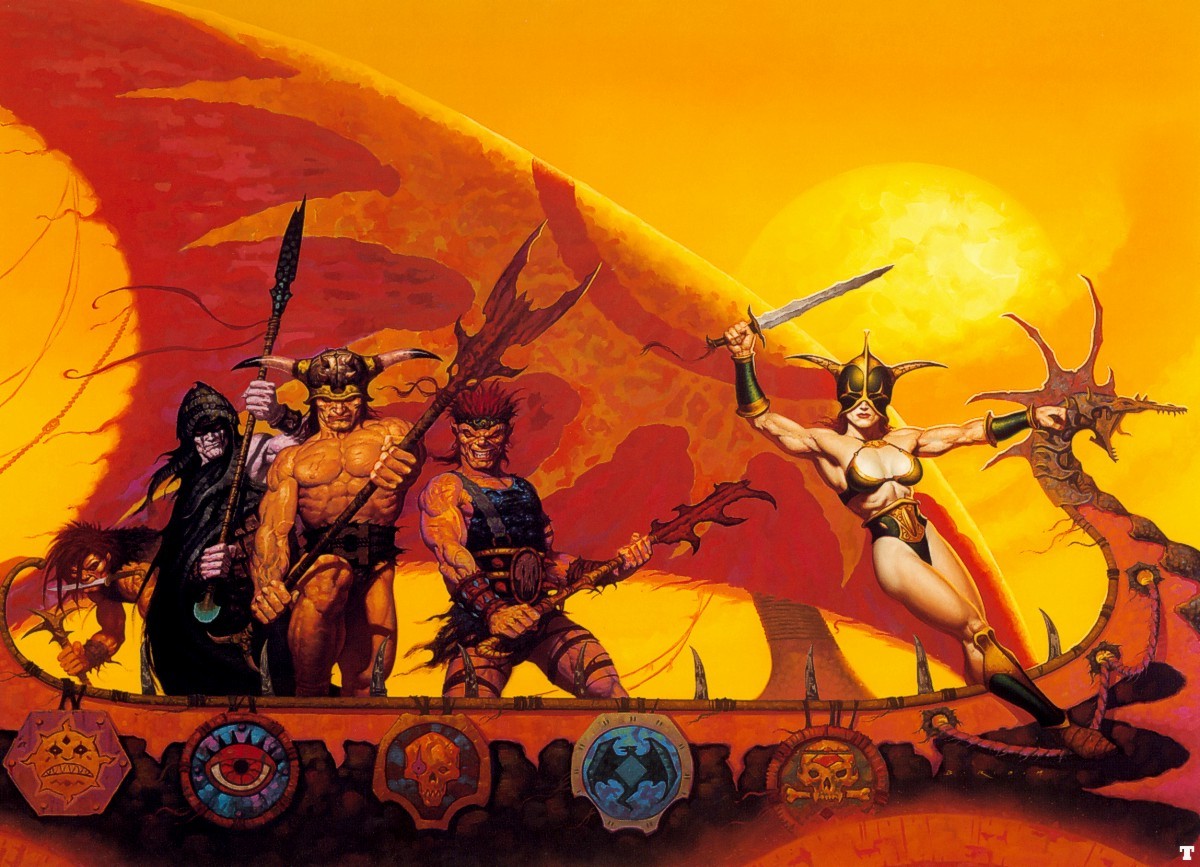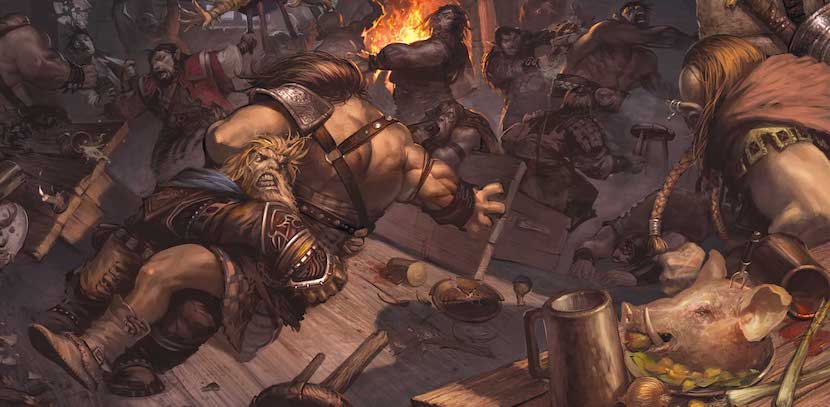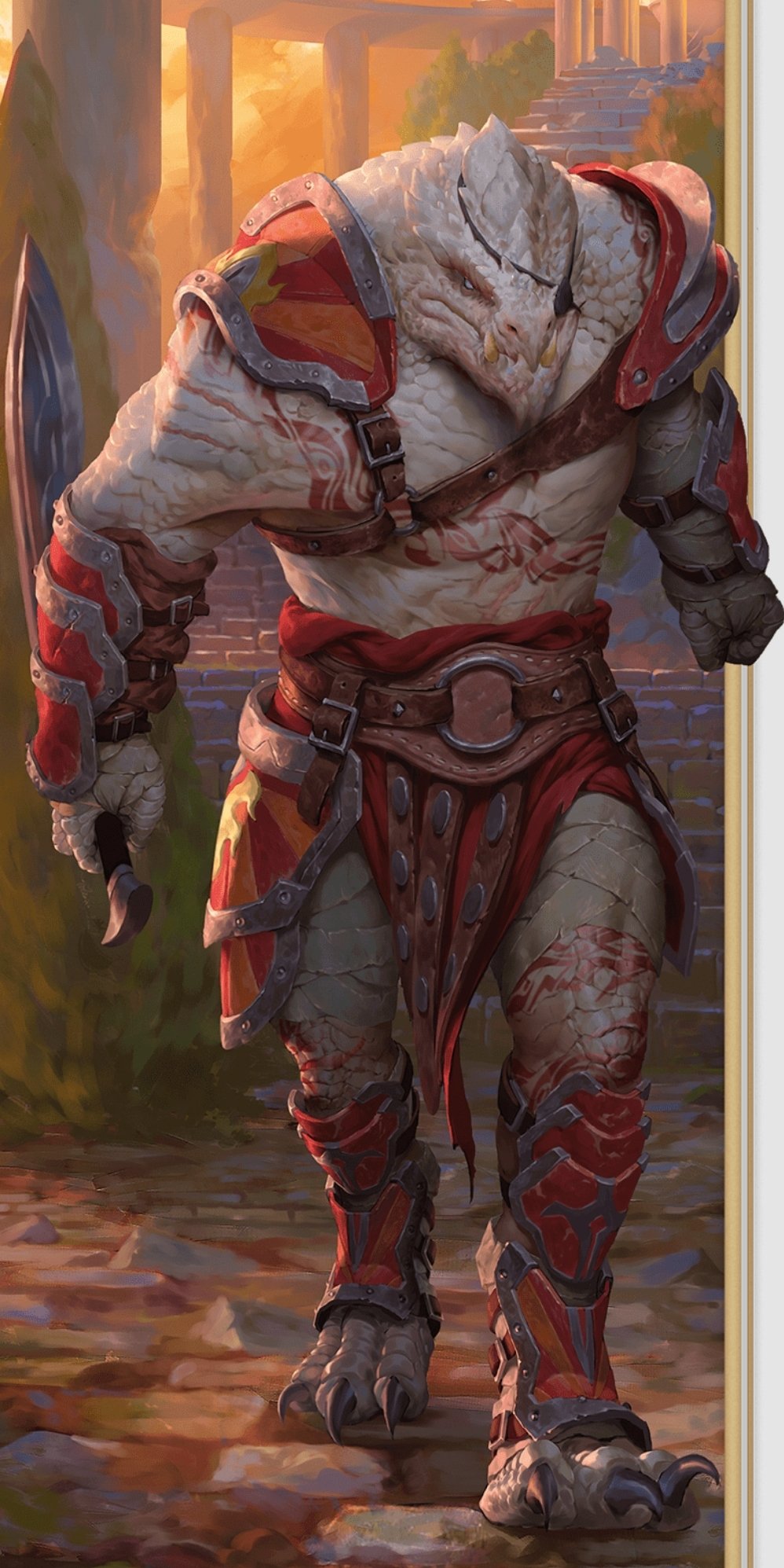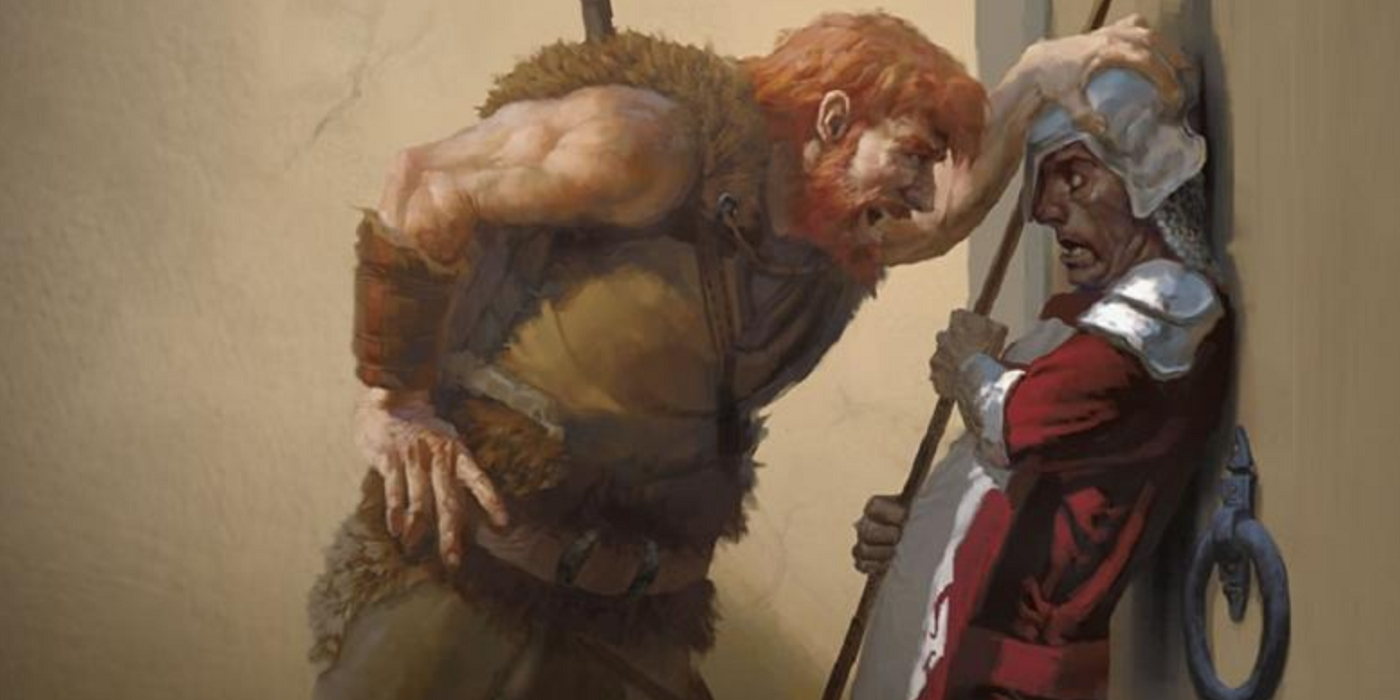The Gladiator Fighter subclass is all about combat theatrics, weapon masteries, and a whole lot of your table referencing the movies.
I mean there’s nothing in the Unearthed Arcana playtest rules for the Gladiator Fighter subclass that say you HAVE to reference either of the Gladiator movies. But that’s just what’s going to happen. Just look at your hands, they’re already starting to run through imaginary grass. Whatever flavor of movie reference you might prefer, there’s no denying the Gladiator subclass has interesting mechanics. Including an option that feels like Fighters should just get to have it normally.
Gladiator Fighter
Gladiators fall into a category of Fighter archetype that WotC has experimented with before. It brings to mind echoes of the 3rd Edition days, when there were all sorts of archetypes for weapon-masters. Which is weird enough, what the Gladiator is. In a nutshell, the Gladiator Fighter is a weapon-master that depends on Charisma to get a few extra benefits when making weapon attacks.
This isn’t bad, necessarily. Especially if you have shenaniganned your way into focusing on Charisma already—this might not be a bad class for people with a Warlock Dip to only need Charisma and then whatever else they want. But even if you play it rules as written, it’s a nice incentive for the Fighter to focus on Charisma, even if that’s suboptimal in terms of hit points or AC or whatever.
Because the Gladiator is all about putting on a show. To that end, they know more tricks. They can do more violence. And really make an art out of rolling a d20 and adding the attack modifier:
“Gladiators are just as much performers as they are warriors. Whether brawling in underground fighting rings or fighting for survivalin bloodtsained arenas, a Gladiator combines martial skill with theatrics to awe and intimidate their audiences.”
The Right Weapon For Any Job
To that end, they get two big features right at 3rd level. The main one, the core of the subclass, is Brutality. This feature lets you live out a Fighter’s dream—in that you can do two different weapon mastery properties in a single attack. This honestly feels like something a Fighter should just have as part of their kit (or Battlemaster maneuvers) but that’s a whole other argument. Now it’s limited, you can’t just combine them willy-nilly.
Your can use either the Sap, Vex, or Topple Masteries—in addition to whatever weapon mastery property happens to be on the weapon you’re using. And when you use Brutality, you gain an extra effect: with Bleed (the Sap one), you deal extra damage equal to your Charisma modifier. With Bluff (Vex), you gain Advantage on the next saving throw you make before the end of your next turn. With Stumble (Topple), your target can only take an Action or Bonus Action. Not both. And you can do this up to your Charisma modifier times per day.
The other big feature you get at level 3 is Combat Theatrics. This gives you “combat skills to entertain, devastating opponents and dazzling onlookers.” This is another suite of minor boosts. For one, whenever you make an Acrobatics or Athletics check, you can add your Charisma modifier as well. And for two, you gain proficiency in either Acrobatics, Athletics, Deception, Intimidation, or Performance.
The Gladiator Fighter at Higher Levels
At higher levels, Gladiators get a mix of offensive and defensive options. Starting at Level 7, when you get Flourish Parry. This again feels like something a Fighter should just have—or like a souped-up Battlemaster Maneuver.
Because it’s both parry and attack—add your Charisma modifier to your AC for one attack, and if it causes the attack to miss, you then can counterattack as part of the same reaction. And not only that, but if that attack hits, you can use a Brutality effect for free on the creature. Of course, this being WotC, these Fighters can only make the counterattack once per Long Rest, which feels way too little. But you can parry as often as your Reaction is ready.
At level 10, Bolder Brutalities upgrades your Brutality with new options. Now you can do an enhanced Cleave (Rive) adding your ability modifier to the damage of the extra attack you make when you cleave. Or you can do an advanced Push (Rush), and move up to your speed without provoking Opportunity Attacks. Some may like the improved Slow (Stagger). This lets you slow a target and give them Disadvantage on their next saving throw.
At level 15, Brutal Resurgence lets your Second Wind and Action Surge restore one use of your Brutality, each. And at level 18, you gain Mutilate, which lets you try to injure a Bloodied creature. They have to save or become Maimed (can only make one attack with attack action) or Sluggish (speed is halved, -2 AC). These last until the target regains hit points. Again, you can only do this once per long rest.
All in all, this is a solid Fighter subclass. I really love the techniques they play around with here. Sure, maybe it could have a little more use of some features, but all in all, what a strong showing for a Fighter from Wizards of the Coast.
Be sure and fill out the survey which goes live August 28th we only get so many chances at a good Fighter playtest!
Don’t Miss:
Writer, Editor, Texas Native, and now Tex-Pat, Adam covers all things Tabletop Gaming. Which includes Warhammer 40,000, Age of Sigmar, D&D, Board Games and everything else that involves dice, boards, cards and a table.
A hobbyist, player, and collector of miniatures and games, Adam’s current obsession are his Death and Chaos Armies for Age of Sigmar, his Blood Angels and Tyranids for 40k, an expanding collection of Marvel: Crisis Protocol minis, and his ever growing Arkham Horror: The Card Game Collection.
Read more at this site





